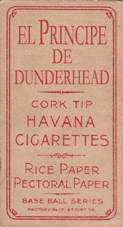How detect bleached cards by Kevin Saucier
Page 1 of 1
 How detect bleached cards
How detect bleached cards
Card bleaching is an attempt to use chemical agents to clean, brighten
or whiten a card. Bleaching can hide or mask stains, remove the
naturally harsh toning of a card or clean up a dirty border or section.
Just because the word "bleaching" is used to define this type of
alteration, it does not necessarily mean that ordinary household
laundry bleach is used in the process. Also, the term bleaching does
not always pertain to whitening an area. Chemical solutions can be used
to revitalize a card and make the colors appear more vibrant. This is
especially true with lighter colors. The solutions can all but
eliminate years of natural wear, discoloration and dirt.

There are several ways to tell if a card has been bleached or
chemically treated. First is the nose test. Almost all chemicals create
a distinct odor that permeates into the cardboard stock and can stay
there for quite some time. The human nose can be highly sensitive and
therefore may be able to detect the scent of something other than an
ambient odor. If you suspect a card has been bleached simply, hold it
up to your nose and sniff. Since cardboard is virtually odorless, if
you smell anything abnormal, chances are it has been chemically
treated. This won't help in an online auction or a purchase where you
cannot physically hold the card.
Look to make sure the card is not faded, while at the same time
have sparkling clean white areas, brighter than normal colors and/or
borders. Since chemicals and bleaching agents can affect the entire
card, ink throughout the card or certain colors can show signs of
fading. Depending on the card stock and age, black lettering can appear
dark gray, red ink may turn slightly orange dark blues may appear a
shade lighter and so on. Again, you will often see this is in addition
to bright clean white areas. For the most part bleaching is not
confined to one small area, you will need to look at the big picture.
The card below has had its colors faded by being immersed in no
less than four different very harsh chemicals. It was sent in as a test
to see if a card with a "horrendous" chemical odor would be graded...it
reeked.
If the card has any creases, wrinkles, scuffs or deep pores,
chemicals will work their way inside and give it an unnatural look as
well. Creases and scuffs, however small, frequently expose raw
cardboard. Bleaching agents can seep into this crevasses and make that
entire area surprisingly white. It doesn't take much experience or
training to be capable of spotting this altered area.
Most, if not all, vintage cards have some degree of toning or a
natural aging, it may not be on the card front or back but most
assuredly on the edges. This again, is where a halogen light and a
loupe come in handy. Check the edges to see if that light brown toning
is present. If a card is bleached, the edges will be as well. This
should be the primary focus of the overall inspection, as in a trimmed
card, the edges will the key to identifying a bleached card.
Check the card for faint stains. Bleaching is not always used to
make a card brighter and better, it is sometimes used to mask or cover
stains, residue or marks but may not always completely remove them.
The blury spot in the middle of the Hegan card is where a stain was
removed. Yes...I can still see the very faint writing on the SGC graded
card.
Chemical solutions that were not well mixed, incorrectly used,
incorrectly mixed or cards that were exposed too long or not long
enough may have their own special problems or telltale signs. Depending
on the year and cardstock some cards will be affected differently.
Stains that were not already there can suddenly appear, dark spotting,
white spots or marks and light stains can develop. Oddly enough, some
solutions will bleach a card but leave darker spots at the corners
and/or borders by the cards edge.

The left picture shows a faint example of a chemically created corner spot/stain.
Kevin Saucier
or whiten a card. Bleaching can hide or mask stains, remove the
naturally harsh toning of a card or clean up a dirty border or section.
Just because the word "bleaching" is used to define this type of
alteration, it does not necessarily mean that ordinary household
laundry bleach is used in the process. Also, the term bleaching does
not always pertain to whitening an area. Chemical solutions can be used
to revitalize a card and make the colors appear more vibrant. This is
especially true with lighter colors. The solutions can all but
eliminate years of natural wear, discoloration and dirt.


There are several ways to tell if a card has been bleached or
chemically treated. First is the nose test. Almost all chemicals create
a distinct odor that permeates into the cardboard stock and can stay
there for quite some time. The human nose can be highly sensitive and
therefore may be able to detect the scent of something other than an
ambient odor. If you suspect a card has been bleached simply, hold it
up to your nose and sniff. Since cardboard is virtually odorless, if
you smell anything abnormal, chances are it has been chemically
treated. This won't help in an online auction or a purchase where you
cannot physically hold the card.
Look to make sure the card is not faded, while at the same time
have sparkling clean white areas, brighter than normal colors and/or
borders. Since chemicals and bleaching agents can affect the entire
card, ink throughout the card or certain colors can show signs of
fading. Depending on the card stock and age, black lettering can appear
dark gray, red ink may turn slightly orange dark blues may appear a
shade lighter and so on. Again, you will often see this is in addition
to bright clean white areas. For the most part bleaching is not
confined to one small area, you will need to look at the big picture.
The card below has had its colors faded by being immersed in no
less than four different very harsh chemicals. It was sent in as a test
to see if a card with a "horrendous" chemical odor would be graded...it
reeked.

If the card has any creases, wrinkles, scuffs or deep pores,
chemicals will work their way inside and give it an unnatural look as
well. Creases and scuffs, however small, frequently expose raw
cardboard. Bleaching agents can seep into this crevasses and make that
entire area surprisingly white. It doesn't take much experience or
training to be capable of spotting this altered area.

Most, if not all, vintage cards have some degree of toning or a
natural aging, it may not be on the card front or back but most
assuredly on the edges. This again, is where a halogen light and a
loupe come in handy. Check the edges to see if that light brown toning
is present. If a card is bleached, the edges will be as well. This
should be the primary focus of the overall inspection, as in a trimmed
card, the edges will the key to identifying a bleached card.
Check the card for faint stains. Bleaching is not always used to
make a card brighter and better, it is sometimes used to mask or cover
stains, residue or marks but may not always completely remove them.
The blury spot in the middle of the Hegan card is where a stain was
removed. Yes...I can still see the very faint writing on the SGC graded
card.



Chemical solutions that were not well mixed, incorrectly used,
incorrectly mixed or cards that were exposed too long or not long
enough may have their own special problems or telltale signs. Depending
on the year and cardstock some cards will be affected differently.
Stains that were not already there can suddenly appear, dark spotting,
white spots or marks and light stains can develop. Oddly enough, some
solutions will bleach a card but leave darker spots at the corners
and/or borders by the cards edge.

The left picture shows a faint example of a chemically created corner spot/stain.

Kevin Saucier
 Similar topics
Similar topics» How to detect trimmed cards by Kevin Saucier
» Soaking cards and how to detect them by Kevin Saucier
» How to detect recolored cards by Kevin Saucier
» How to detect a rebacked card by Kevin Saucier
» How to detect rebuilt corners by Kevin Saucier
» Soaking cards and how to detect them by Kevin Saucier
» How to detect recolored cards by Kevin Saucier
» How to detect a rebacked card by Kevin Saucier
» How to detect rebuilt corners by Kevin Saucier
Page 1 of 1
Permissions in this forum:
You cannot reply to topics in this forum|
|
|

